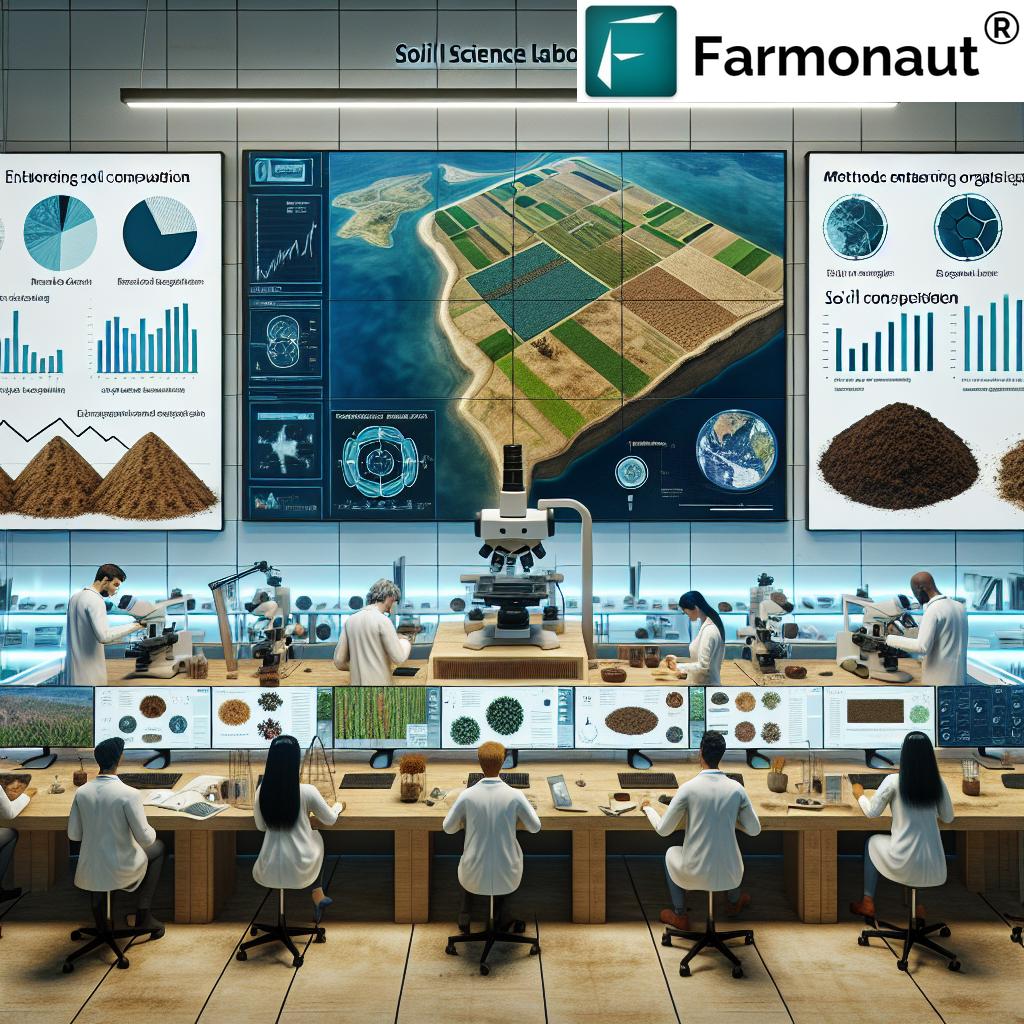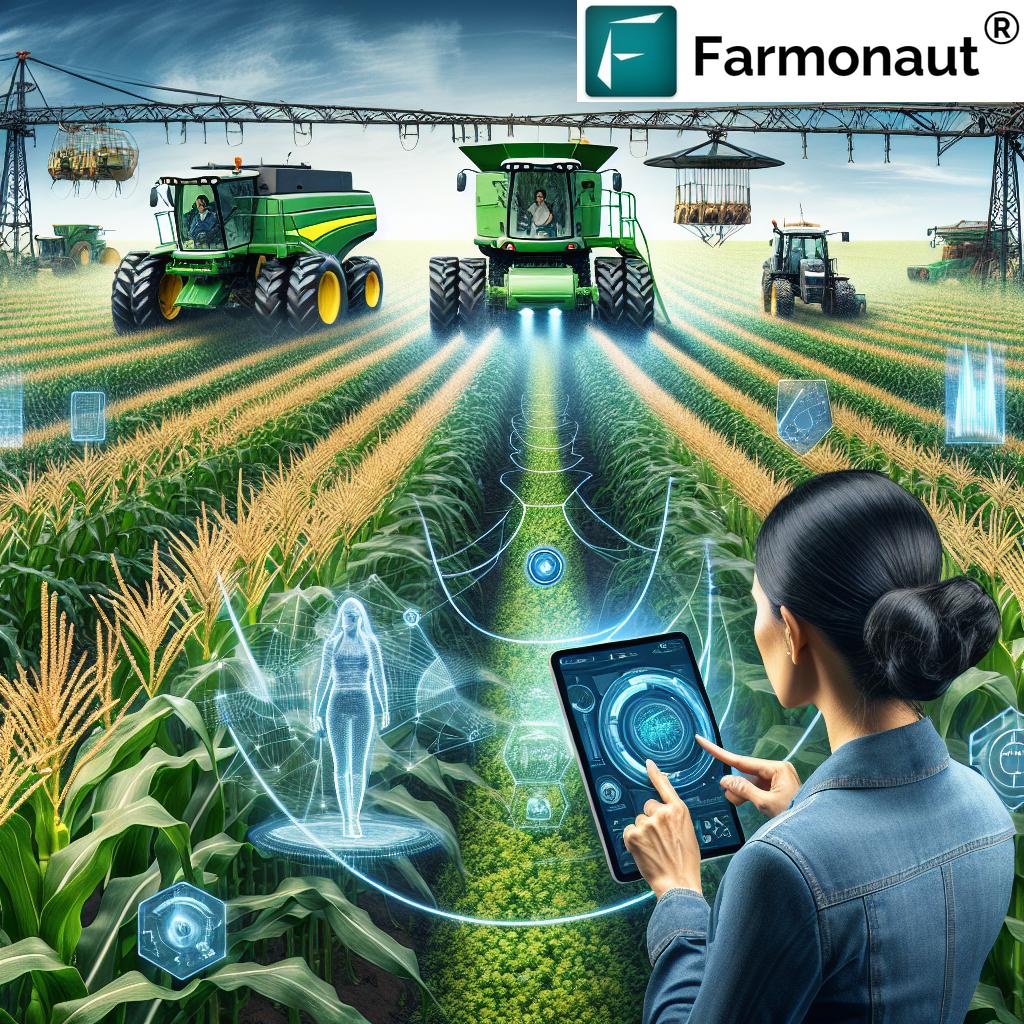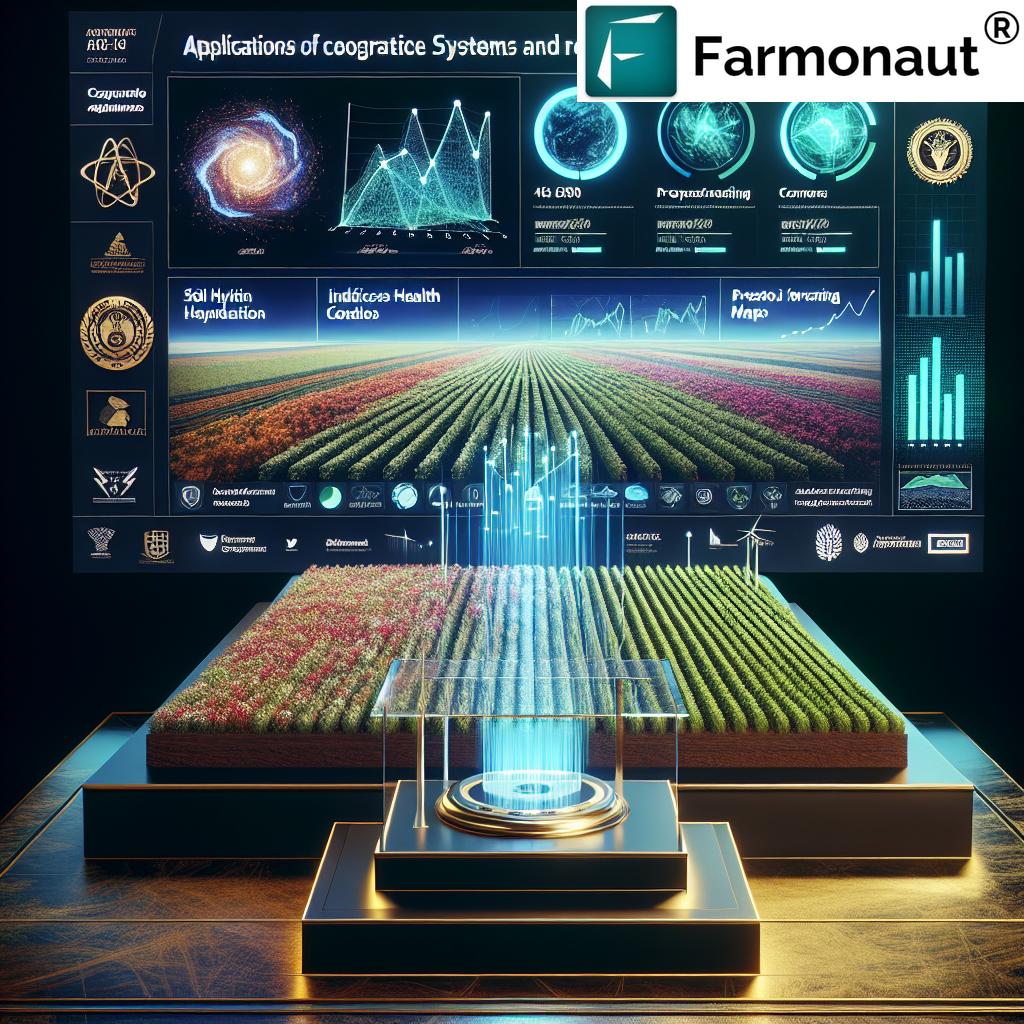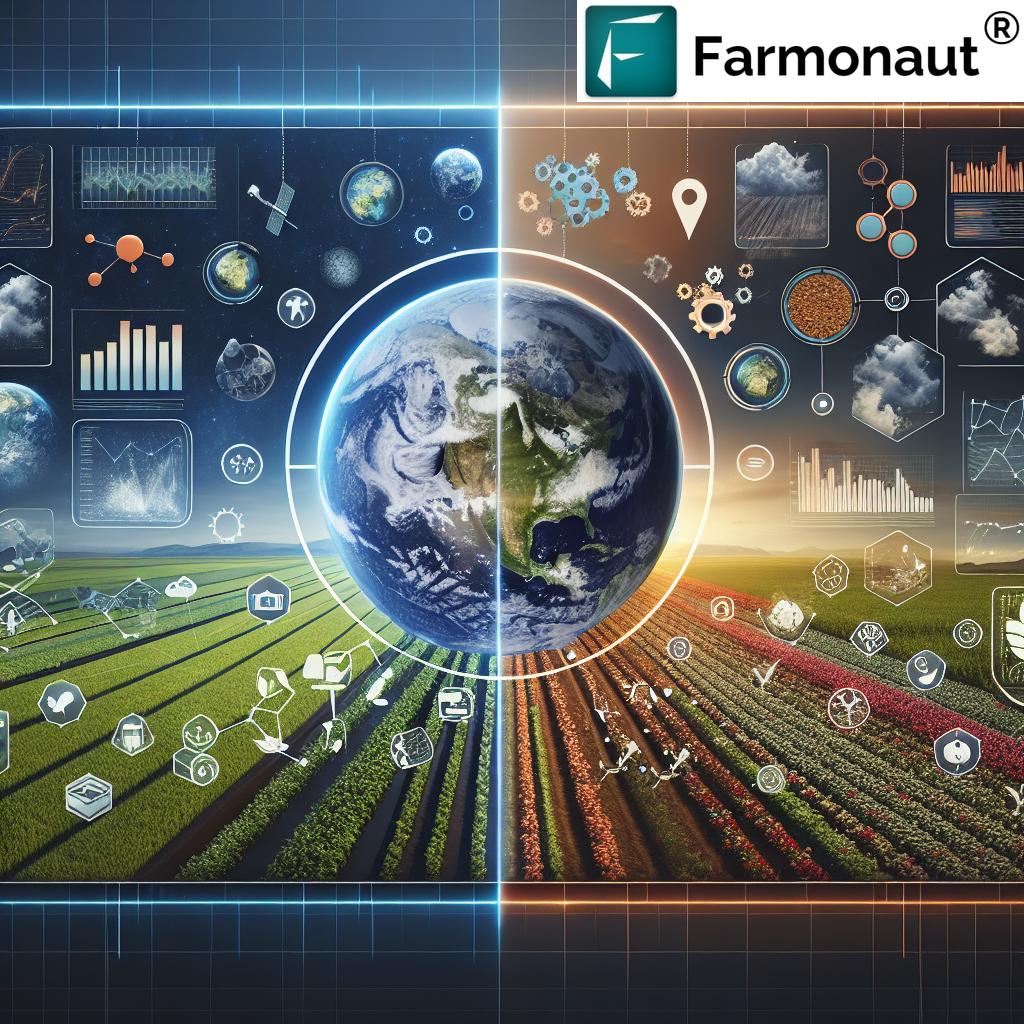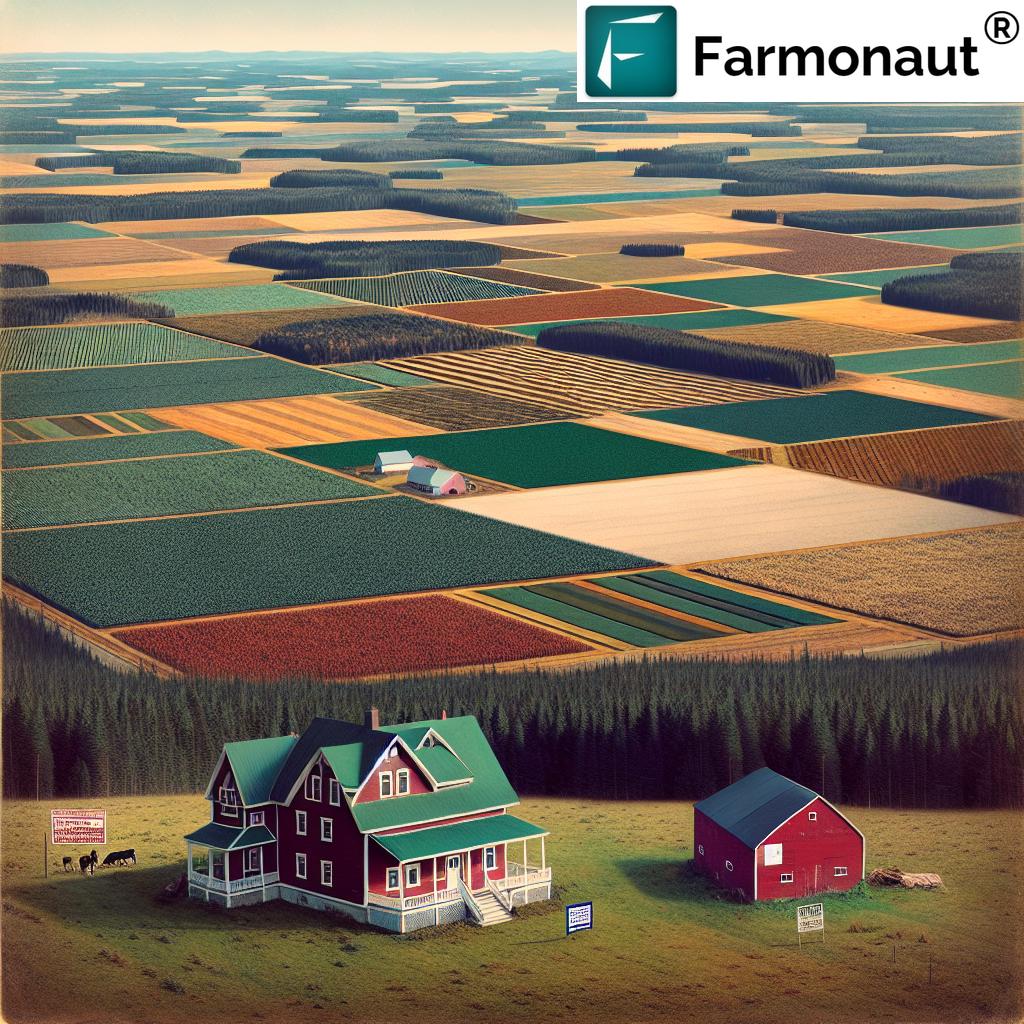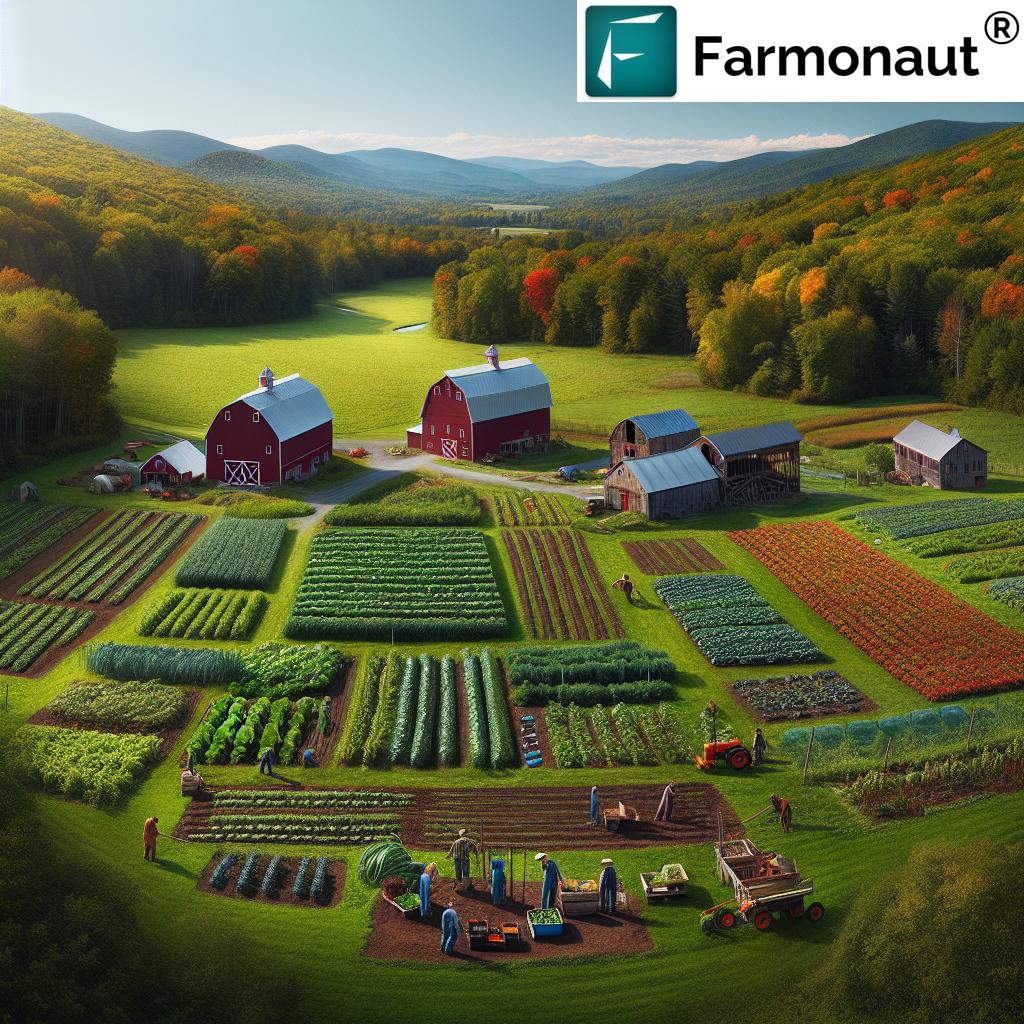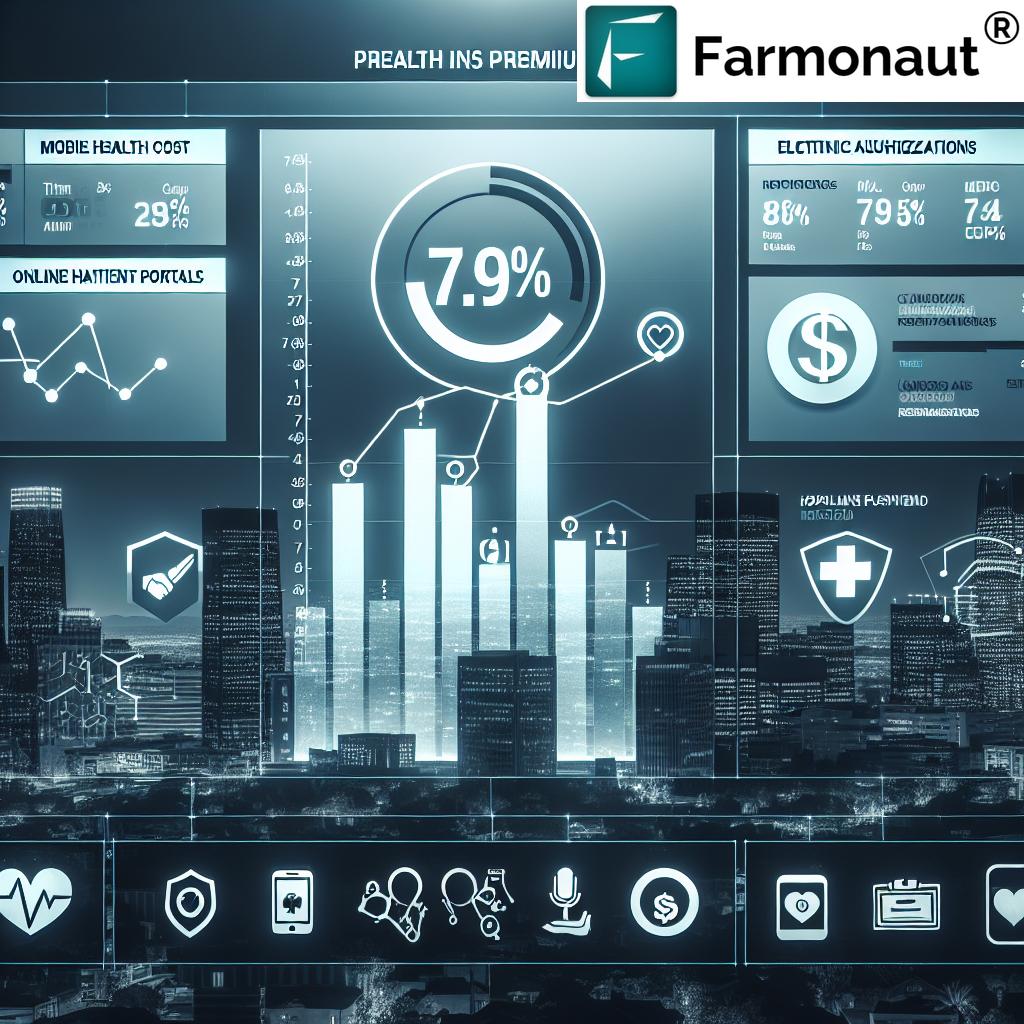Revolutionizing Madison Agriculture: Farmonaut’s GIS-Powered Soil Science Advancements for Sustainable Farming

“Precision agriculture technologies can increase crop yields by up to 30% while reducing water usage by 20-50%, according to recent studies.”
Welcome to the cutting edge of agricultural innovation in Madison, Wisconsin! We’re thrilled to explore how soil science advancements and sustainable agriculture practices are transforming the farming landscape in America. In this comprehensive guide, we’ll delve into the revolutionary world of precision agriculture technologies, with a special focus on how GIS in farming and remote sensing are reshaping crop management strategies.
As we navigate through this exciting terrain, we’ll uncover the latest soil conservation techniques and their profound impact on farm productivity. We’ll also examine the critical intersection of climate change and agriculture, exploring how innovative approaches to soil health assessment are playing a crucial role in mitigating environmental challenges.
At the forefront of this agricultural revolution is Farmonaut, a pioneering company that’s harnessing the power of satellite-based farm management solutions to make precision agriculture accessible and affordable for farmers worldwide. Through their innovative platform, Farmonaut is integrating cutting-edge technology with data-driven insights to elevate traditional farming practices.
The Power of GIS in Modern Agriculture
Geographic Information Systems (GIS) have become an indispensable tool in the arsenal of modern farmers and agronomists. By leveraging GIS technology, we can now map and analyze spatial patterns in soil composition, crop health, and environmental factors with unprecedented precision. This wealth of geospatial data allows for more informed decision-making in various aspects of farm management, from irrigation strategies to pest control measures.
- Soil Mapping: GIS enables the creation of detailed soil maps, highlighting variations in soil type, texture, and nutrient content across fields.
- Crop Monitoring: By integrating satellite imagery with GIS, farmers can track crop growth and health in real-time, identifying problem areas quickly.
- Resource Optimization: GIS helps in planning efficient irrigation systems and optimizing the application of fertilizers and pesticides.
- Yield Prediction: Historical and current data can be analyzed to forecast crop yields, aiding in harvest planning and market strategies.
Farmonaut’s platform exemplifies the power of GIS in agriculture. By providing farmers with access to satellite-based crop health monitoring and AI-driven advisory systems, Farmonaut is putting the benefits of GIS directly into the hands of those who need it most.
Remote Sensing: A Game-Changer for Crop Management
Remote sensing for agriculture has revolutionized the way we monitor and manage crops. This technology allows us to gather critical information about crop health, soil moisture, and even pest infestations without setting foot in the field. Here’s how remote sensing is transforming crop management strategies:
- Vegetation Indices: Techniques like Normalized Difference Vegetation Index (NDVI) help assess crop vigor and biomass.
- Soil Moisture Monitoring: Thermal and microwave sensors can detect soil moisture levels, aiding in irrigation planning.
- Early Stress Detection: Remote sensing can identify signs of crop stress before they’re visible to the naked eye, allowing for prompt intervention.
- Precision Application: By mapping variability within fields, remote sensing guides precise application of inputs, reducing waste and environmental impact.
Farmonaut’s use of multispectral satellite imagery exemplifies the practical application of remote sensing in agriculture. Their platform provides farmers with valuable insights into vegetation health, soil moisture levels, and other critical metrics, enabling data-driven decisions that optimize crop yields and resource use.
Soil Conservation Techniques for Sustainable Farming
As stewards of the land, it’s our responsibility to implement soil conservation techniques that preserve and enhance this vital resource. In Madison and beyond, farmers are adopting practices that not only protect the soil but also boost productivity and resilience against climate change. Let’s explore some of these innovative approaches:
- No-Till Farming: By minimizing soil disturbance, no-till practices help maintain soil structure, reduce erosion, and increase organic matter content.
- Cover Cropping: Planting cover crops between growing seasons protects the soil, improves fertility, and enhances biodiversity.
- Crop Rotation: Alternating crops helps break pest cycles, improve soil health, and optimize nutrient use efficiency.
- Contour Farming: Planting along the contours of sloped land reduces runoff and erosion, preserving topsoil and nutrients.
- Precision Nutrient Management: Using GIS and soil testing data to apply fertilizers precisely where and when they’re needed, minimizing waste and environmental impact.
These techniques not only conserve soil but also contribute to more sustainable and productive farming systems. By integrating these practices with advanced technologies like those offered by Farmonaut, farmers can achieve a harmonious balance between conservation and production.
Explore Farmonaut’s API for advanced agricultural insights
Climate Change and Agriculture: Adapting for the Future
The intersection of climate change and agriculture presents both challenges and opportunities for farmers in Madison and across America. As we face increasingly unpredictable weather patterns and extreme events, it’s crucial to adapt our farming practices to ensure food security and environmental sustainability. Here’s how modern agriculture is rising to meet these challenges:
- Drought-Resistant Crops: Developing and planting varieties that can thrive with less water.
- Water Conservation: Implementing efficient irrigation systems and water management practices.
- Carbon Sequestration: Adopting farming practices that enhance soil carbon storage, such as no-till and cover cropping.
- Diversification: Planting a variety of crops to spread risk and improve ecosystem resilience.
- Technology Adoption: Utilizing tools like Farmonaut’s platform to monitor and respond to changing environmental conditions in real-time.
Farmonaut’s carbon footprinting feature is particularly relevant in this context, allowing agribusinesses to track their emissions and take steps towards more sustainable operations. By providing real-time data on environmental impact, Farmonaut empowers farmers to make decisions that are both economically viable and environmentally responsible.
“The global precision agriculture market is projected to reach $12.9 billion by 2027, growing at a CAGR of 13.1% from 2020 to 2027.”
Agricultural Policy Initiatives Shaping the Future
Agricultural policy initiatives play a crucial role in shaping the landscape of farming in America. From the Farm Bill to the Clean Water Act, these policies influence everything from crop insurance to environmental regulations. Let’s examine some key policy areas and their implications for Madison farmers:
- Farm Bill: This comprehensive legislation provides support for farmers through various programs, including crop insurance, conservation initiatives, and research funding.
- Clean Water Act: Regulates the discharge of pollutants into water bodies, impacting agricultural practices related to fertilizer and pesticide use.
- Conservation Programs: Initiatives like the Conservation Reserve Program (CRP) incentivize farmers to implement environmentally beneficial practices.
- Precision Agriculture Loan Act: Proposed legislation to help farmers access loans for purchasing precision agriculture equipment.
Understanding and leveraging these policies is crucial for farmers looking to optimize their operations while adhering to regulatory requirements. Farmonaut’s platform can assist in this regard by providing data and insights that align with policy objectives, such as reducing environmental impact and improving resource efficiency.
Cutting-Edge Soil Health Assessment Methods
Soil health assessment is a cornerstone of sustainable agriculture, providing critical insights into the foundation of our farming systems. Modern techniques are revolutionizing how we evaluate and monitor soil health, enabling more precise and effective management strategies. Let’s explore some of these innovative approaches:
| Assessment Technique | Key Parameters Measured | Technology Used | Benefits for Farmers | Limitations |
|---|---|---|---|---|
| Remote Sensing | Soil moisture, vegetation health, land use patterns | Satellite imagery, drones | Large-scale monitoring, time-efficient | Limited depth penetration, weather-dependent |
| In-Field Soil Testing | pH, nutrient levels, organic matter content | Portable sensors, test kits | Immediate results, site-specific data | Labor-intensive, potential sampling errors |
| GIS Mapping | Spatial distribution of soil properties | GPS, mapping software | Precise location-based management | Requires technical expertise, initial setup costs |
| Laboratory Analysis | Detailed soil composition, microbial activity | Advanced lab equipment | Comprehensive analysis, high accuracy | Time-consuming, expensive for frequent testing |
Farmonaut’s integration of satellite-based monitoring with AI-driven analysis represents a powerful combination of these assessment techniques. By providing farmers with real-time data on soil health indicators, Farmonaut enables more informed decision-making and targeted interventions.
Access Farmonaut’s API Developer Docs for in-depth integration guidance
Precision Agriculture Technologies: A Closer Look
Precision agriculture technologies are at the heart of the modern farming revolution, offering unprecedented levels of accuracy and efficiency in crop management. These technologies enable farmers to apply the right treatment in the right place at the right time, optimizing resource use and maximizing yields. Let’s explore some key components of precision agriculture:
- GPS Guidance Systems: Enable precise navigation for planting, spraying, and harvesting operations.
- Variable Rate Technology (VRT): Allows for precise application of inputs based on spatial variability within fields.
- Yield Monitoring: Provides real-time data on crop yields during harvest, enabling detailed analysis and future planning.
- Soil Sensors: Monitor soil moisture, temperature, and nutrient levels to guide irrigation and fertilization decisions.
- Drones and Satellite Imagery: Offer aerial views of crop health and field conditions, complementing ground-based observations.
Farmonaut’s platform exemplifies the integration of these technologies, offering farmers a comprehensive suite of tools for precision agriculture. By leveraging satellite imagery and AI-driven analytics, Farmonaut provides actionable insights that help farmers optimize their operations and boost productivity.
The Role of AI in Modern Agriculture
Artificial Intelligence (AI) is rapidly becoming an indispensable tool in modern agriculture, offering capabilities that were once the realm of science fiction. From predictive analytics to autonomous machinery, AI is transforming every aspect of farming. Here’s how AI is making a difference:
- Crop and Soil Monitoring: AI algorithms can analyze satellite and drone imagery to detect early signs of crop stress or disease.
- Predictive Yield Models: By processing historical data and current conditions, AI can forecast crop yields with increasing accuracy.
- Automated Irrigation Systems: AI-powered systems can optimize water usage based on real-time soil moisture data and weather forecasts.
- Pest and Disease Management: Machine learning models can identify pest infestations and disease outbreaks, enabling targeted interventions.
- Robotic Harvesting: AI-guided robots are being developed to harvest delicate crops with precision and efficiency.
Farmonaut’s Jeevn AI Advisory System is a prime example of AI’s potential in agriculture. By analyzing satellite data and other inputs, it provides personalized farm advisory services, helping farmers make data-driven decisions that improve productivity and sustainability.
Sustainable Farming Practices for the Future
As we look to the future of agriculture in Madison and beyond, the adoption of sustainable farming practices is more critical than ever. These practices not only preserve our natural resources but also ensure long-term productivity and profitability. Let’s explore some key sustainable farming approaches:
- Integrated Pest Management (IPM): Combines biological, cultural, and chemical methods to control pests while minimizing environmental impact.
- Agroforestry: Integrates trees and shrubs into crop and animal farming systems, enhancing biodiversity and soil health.
- Precision Irrigation: Utilizes advanced sensors and weather data to apply water precisely when and where it’s needed, reducing waste.
- Organic Farming: Emphasizes natural pest control and soil health management without synthetic chemicals.
- Regenerative Agriculture: Focuses on restoring soil health through practices like no-till farming, cover cropping, and rotational grazing.
Farmonaut’s platform supports these sustainable practices by providing farmers with the data and insights needed to implement them effectively. From optimizing resource use to monitoring environmental impact, Farmonaut’s tools align perfectly with the goals of sustainable agriculture.
The Future of Agronomy: Education and Career Development
As the field of agronomy continues to evolve, staying up-to-date with the latest advancements is crucial for professionals and aspiring agronomists alike. Here are some key areas of focus for education and career development in modern agronomy:
- Precision Agriculture Certifications: Specialized training in GIS, remote sensing, and data analytics for agriculture.
- Soil Science Degrees: Advanced programs focusing on soil health, conservation, and sustainable management practices.
- Agricultural Technology Courses: Training in the use of drones, IoT devices, and AI applications in farming.
- Environmental Science: Understanding the interplay between agriculture and ecosystems, focusing on sustainable practices.
- Data Science in Agriculture: Developing skills in big data analysis and machine learning applications for farm management.
Farmonaut’s innovative platform serves as an excellent learning tool for those pursuing careers in modern agriculture. By engaging with Farmonaut’s technology, students and professionals can gain hands-on experience with cutting-edge agricultural technologies.
Frequently Asked Questions
- What is precision agriculture?
Precision agriculture is an approach that uses technology to optimize crop yields and resource use by applying the right treatment in the right place at the right time. - How does GIS benefit farmers?
GIS helps farmers map and analyze spatial patterns in soil composition, crop health, and environmental factors, enabling more informed decision-making in various aspects of farm management. - What role does remote sensing play in modern farming?
Remote sensing allows farmers to gather critical information about crop health, soil moisture, and pest infestations without physical field inspections, enabling more efficient and timely management decisions. - How can farmers adapt to climate change?
Farmers can adapt to climate change by implementing water conservation practices, planting drought-resistant crops, enhancing soil carbon storage, and using technology to monitor and respond to changing environmental conditions. - What are some key soil conservation techniques?
Key soil conservation techniques include no-till farming, cover cropping, crop rotation, contour farming, and precision nutrient management.
Conclusion: Embracing the Future of Agriculture
As we’ve explored throughout this blog, the future of agriculture in Madison and beyond is bright, driven by innovative technologies and sustainable practices. From GIS-powered soil science advancements to AI-driven crop management strategies, the tools at our disposal are more powerful than ever before.
Farmonaut stands at the forefront of this agricultural revolution, offering farmers an accessible and affordable entry point into the world of precision agriculture. By harnessing the power of satellite imagery, AI, and data analytics, Farmonaut is empowering farmers to make informed decisions that optimize yields, conserve resources, and promote sustainability.
As we look to the future, it’s clear that the integration of technology and traditional farming wisdom will be key to addressing the challenges of food security and environmental stewardship. By embracing these advancements and continuing to innovate, we can ensure a prosperous and sustainable future for agriculture in Madison and across the globe.
Ready to revolutionize your farming practices? Explore Farmonaut’s suite of tools and services to take your agricultural operations to the next level!
